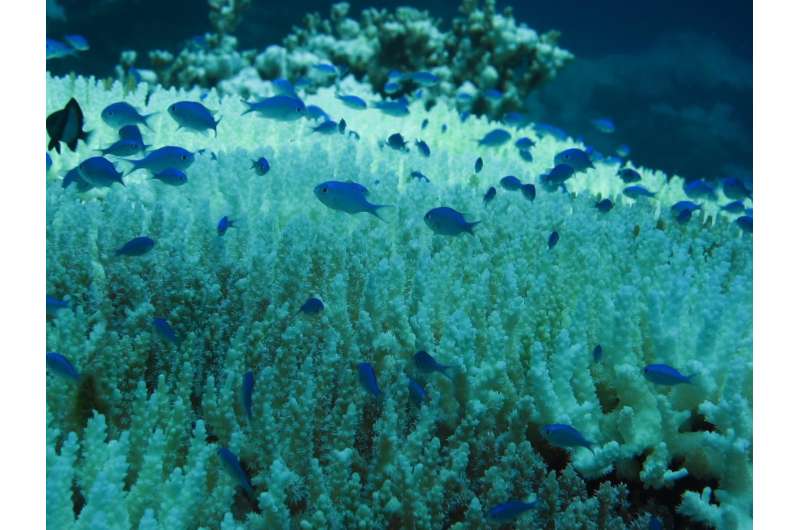1.5 C vs 2 C global warming: New study shows why half a degree matters

European researchers have found substantially different climate change impacts for a global warming of 1.5掳C and 2掳C by 2100, the two temperature limits included in the Paris climate agreement. The additional 0.5掳C would mean a 10-cm-higher global sea-level rise by 2100, longer heat waves, and would result in virtually all tropical coral reefs being at risk. The research is published today (21 April) in Earth System Dynamics, an open access journal of the European Geosciences Union, and is presented at the EGU General Assembly.
"We found significant differences for all the impacts we considered," says the study's lead author Carl Schleussner, a scientific advisor at Climate Analytics in Germany. "We analysed the climate models used in the [Intergovernmental Panel on Climate Change (IPCC)] Fifth Assessment Report, focusing on the projected impacts at 1.5掳C and 2掳C warming at the regional level. We considered 11 different indicators including extreme weather events, water availability, crop yields, coral reef degradation and sea-level rise."
The team, with researchers from Germany, Switzerland, Austria and the Netherlands, identified a number of hotspots around the globe where projected climate impacts at 2掳C are significantly more severe than at 1.5掳C. One of these is the Mediterranean region, which is already suffering from climate change-induced drying. With a global temperature increase of 1.5掳C, the availability of fresh water in the region would be about 10% lower than in the late 20th century. In a 2掳C world, the researchers project this reduction to double to about 20%.
In tropical regions, the half-a-degree difference in global temperature could have detrimental consequences for crop yields, particularly in Central America and West Africa. On average, local tropical maize and wheat yields would reduce twice as much at 2掳C compared to a 1.5掳C temperature increase.
Tropical regions would bear the brunt of the impacts of an additional 0.5掳C of global warming by the end of the century, with warm spells lasting up to 50% longer in a 2掳C world than at 1.5掳C. "For heat-related extremes, the additional 0.5掳C increase marks the difference between events at the upper limit of present-day natural variability and a new climate regime, particularly in tropical regions," explains Schleussner.
The additional warming would also affect tropical coral reefs. Limiting warming to 1.5掳C would provide a window of opportunity for some tropical coral reefs to adapt to climate change. In contrast, a 2掳C temperature increase by 2100 would put virtually all of these ecosystems at risk of severe degradation due to coral bleaching.
On a global scale, the researchers anticipate sea level to rise about 50 cm by 2100 in a 2掳C warmer world, 10 cm more than for 1.5掳C warming. "Sea level rise will slow down during the 21st century only under a 1.5掳C scenario," explains Schleussner.
Co-author Jacob Schewe, of the Potsdam Institute for Climate Impact Research in Germany, says: "Some researchers have argued that there is little difference in climate change impacts between 1.5掳C and 2掳C. Indeed, it is necessary to account for natural variability, model uncertainties, and other factors that can obscure the picture. We did that in our study, and by focusing on key indicators at the regional level, we clearly show that there are significant differences in impacts between 1.5掳C and 2掳C."
William Hare, a senior scientist and CEO at Climate Analytics who also took part in the Earth System Dynamics research, adds: "Our study shows that tropical regions - mostly developing countries that are already highly vulnerable to climate change - face the biggest rise in impacts between 1.5掳C and 2掳C."
"Our results add to a growing body of evidence showing that climate risks occur at lower levels than previously thought. It provides scientific evidence to support the call by vulnerable countries, such as the Least Developed Countries and Small Island Developing States, that a 1.5掳C warming limit would substantially reduce the impacts of climate change," says Hare.
More information: Carl-Friedrich Schleussner et al. Differential climate impacts for policy-relevant limits to global warming: the case of 1.5 掳C and 2 掳C, Earth System Dynamics (2016).
Provided by European Geosciences Union


















